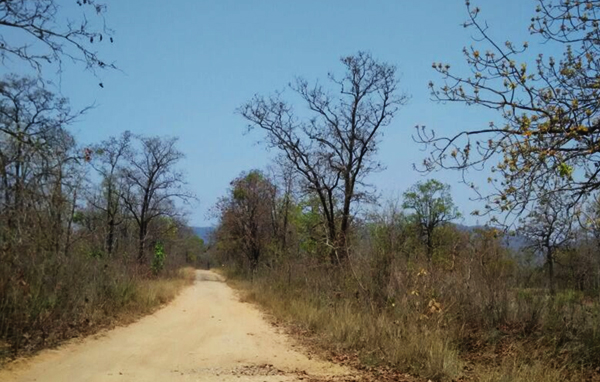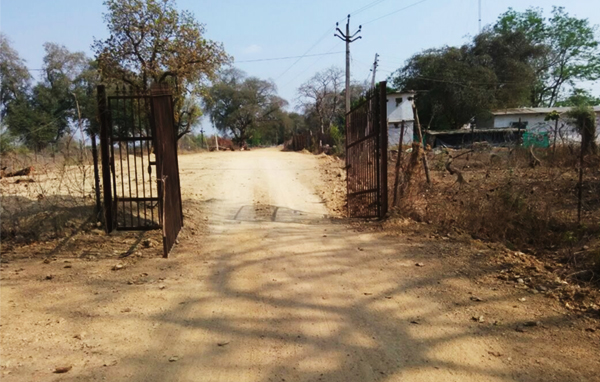A killing a month: how state, Naxal violence has brutalised Chintagufa

Unlike most villages in Sukma, Chintagufa has a signboard welcoming visitors. "Welcome to heaven", it says, perhaps in a tribute to the scenic beauty around. But the signboard and the natural beauty are not the only things that distinguish this village.
Chintagufa, located deep into the forests, some 45 km from the nearest town, Dornapal, is arguably one of the most violent places in India. A CRPF camp stationed here a decade ago has lost over 300 men already.
The camp is attacked almost nightly by the Maoists who take cover in the village, which is perched on higher ground. The next morning, the soldiers come out looking to give back in kind. But by then, all they find are the villagers.

The villagers, squeezed between the two trigger-happy groups, have begged both to take their fight elsewhere. But nobody's listening.
State forces would like the villagers to move out, to allow for an all-out offensive against the Naxals. The villagers don't want to go, nor are they being allowed to by the Naxals, who fear losing an easy cover.
Of late, with the state changing using greater force against the Maoists, the locals are feeling the heat even more. They claim that, on an average, one of them is killed every month, by the Naxals or the state forces. Physical assault is almost a daily routine.
"Take the killing of a local youth Kunjam Linga for instance," says a villager.
The police claim to have killed Linga in an encounter. But the villagers say he was shot point blank, right in front of his family, by a desperate force that couldn't catch the Naxals.
Going by the version of the Additional SP Santosh Singh, "Linga was killed in a skirmish with a joint team of 206th battalion of CoBRA, the CRPF's 150 battalion, and District Reserve Group following an intelligence input about the presence of a group of 8-10 ultras in the area."
"Linga was cooking food inside his house when he was called out by some CRPF soldiers," counters Koya Markam*, a villager. "He was taken about a hundred feet away from his house and shot dead in front of his family, in front of the whole village."
Markam says a boy from the village was picked up the next day and taken to the CRPF camp. "He was hung upside down, beaten black and blue and a gun was shoved into his mouth by the soldiers. They claimed that this boy was Linga's bodyguard."
Caught in a pincer
In Chintagufa, life is a constant test of will because both the armed groups demand exclusive cooperation. Lacha Murkam remembers when somebody he knows was asked by the Naxals to steal a motorcycle.
"They went to this boy and asked him to steal a motorcycle and bring it to them. If he hadn't he would have been hacked to death. So he did. The following morning, the police came looking for the boy and took him to the camp and kept beating him through the day, accusing him of joining the Naxals. You tell me what options do we have?"
The one person who has probably suffered the most violence in this area is the sarpanch Pudiyami Muiye. Because her husband is with the Naxals - he has a local commander - the CRPF men rough her up every time they come to the village.
And in early March, she was also beaten up by the Naxals who had come to take down the solar lights that had been installed in the area. The Naxals see any sign of "progress" with suspicion. They have bombed several schools on the way to Chintagufa for fear the CRPF might take shelter in them.
After the solar lights were destroyed, CRPF commandos came to the village and beat her up for allowing the Naxals to vandalise government property. "The Naxals would have taken at least an hour to dismantle the whole thing, couldn't she have alerted us during this time?" a CRPF man asks rhetorically.

No respite in sight
The CRPF men blame the villagers for conspiring with the Naxals and insist that they have no option but to treat them harshly. "We haven't come here to die or to kill. Just look at the surroundings. There are lush green mountains, and a beautiful lake right in the middle. This is the last place you would like to take up a gun. You know when we are alone, sometimes in the afternoons we promise to ourselves that when we are retired, we will come here and boat in this lake with our families."
That's no consolation to the villagers though. "The CRPF comes to us after the sunrise and threaten to slit our throats, blow up our houses and torture us. The Naxals come after sunset and do the same. Both have set up their own armies of informers. Everyone thinks twice before moving a muscle," says Shankar Joga, a villager.
There is one habit that the inhabitants of Chintagufa haven't been able to rid themselves of, even at a risk to their lives. Perhaps because it is the one thing that reminds them of when life was better.
"We get beautiful tobacco from Andhra Pradesh and almost the entire village is a slave to its taste. We used to go on foot through these mountains for three days, work in tobacco farms and bring back a year's supply. There were no threats to life that we lived then," says Kicchhe Mukka.
But it's dangerous to walk through these lands now, so the villagers must have stopped going out during the tobacco season? "Absolutely not," Mukka says, flashing a smile, "we still keep making our rounds, but secretively."
*Some names have been changed to protect the identity of the villagers
Edited by Mehraj D Lone
First published: 14 April 2016, 11:53 IST





![BJP's Kapil Mishra recreates Shankar Mahadevan’s ‘Breathless’ song to highlight Delhi pollution [WATCH] BJP's Kapil Mishra recreates Shankar Mahadevan’s ‘Breathless’ song to highlight Delhi pollution [WATCH]](https://images.catchnews.com/upload/2022/11/03/kapil-mishra_240884_300x172.png)

![Anupam Kher shares pictures of his toned body on 67th birthday [MUST SEE] Anupam Kher shares pictures of his toned body on 67th birthday [MUST SEE]](https://images.catchnews.com/upload/2022/03/07/Anupam_kher_231145_300x172.jpg)






